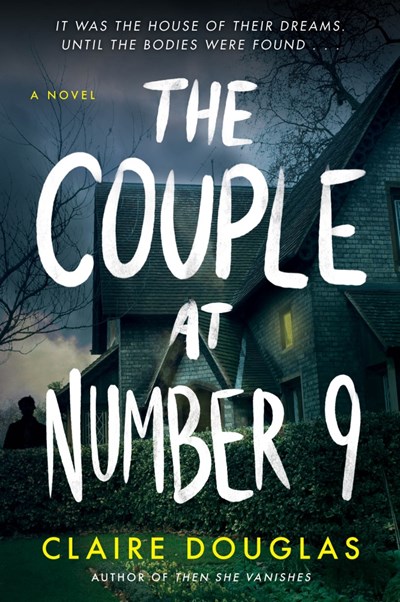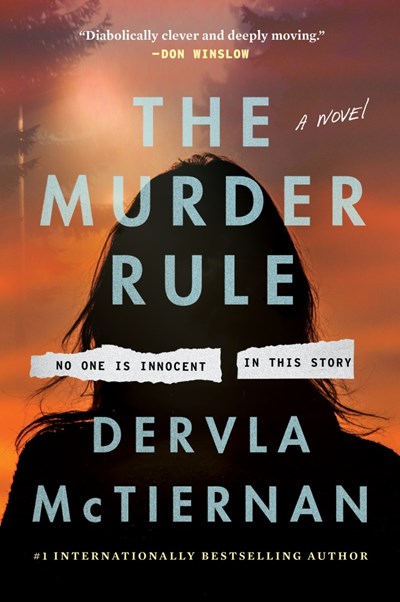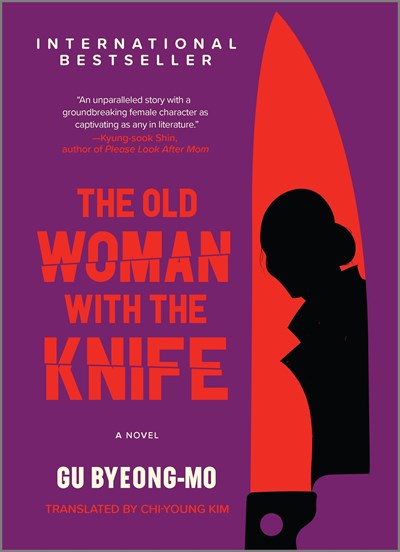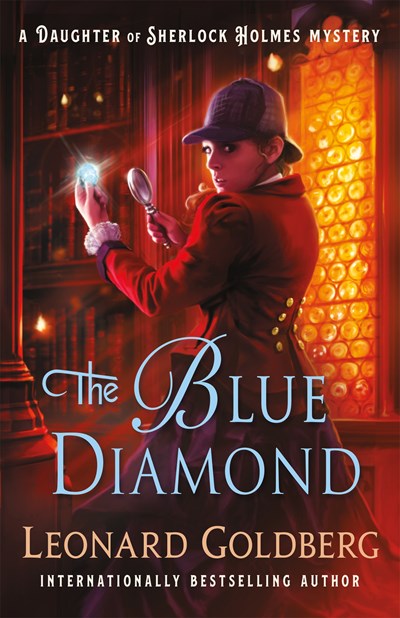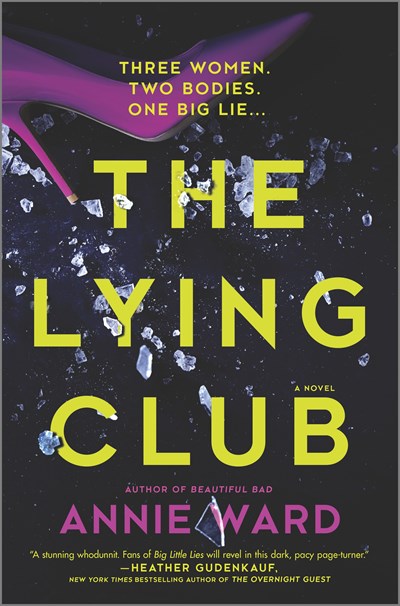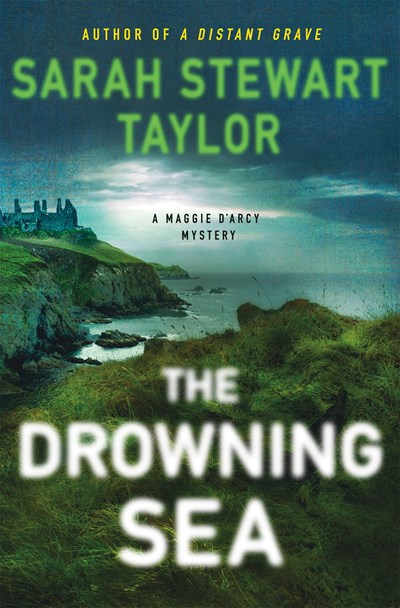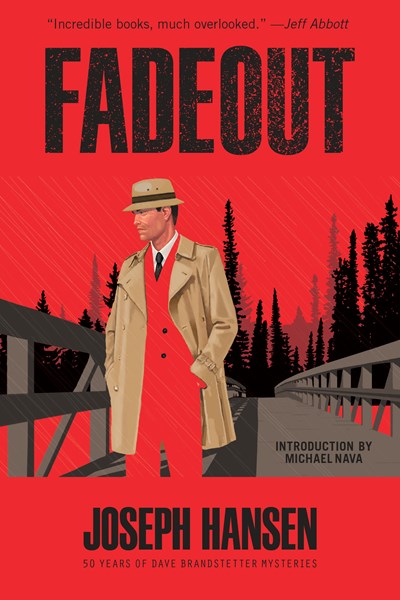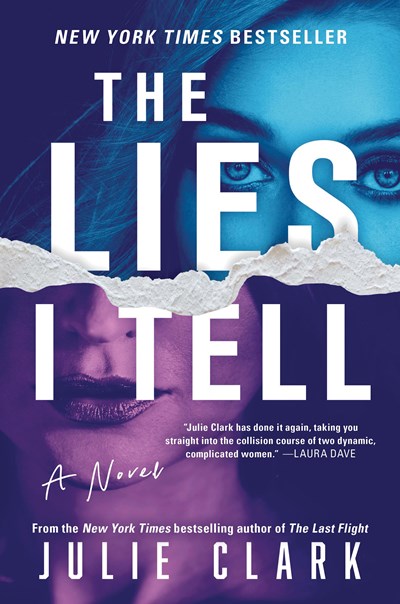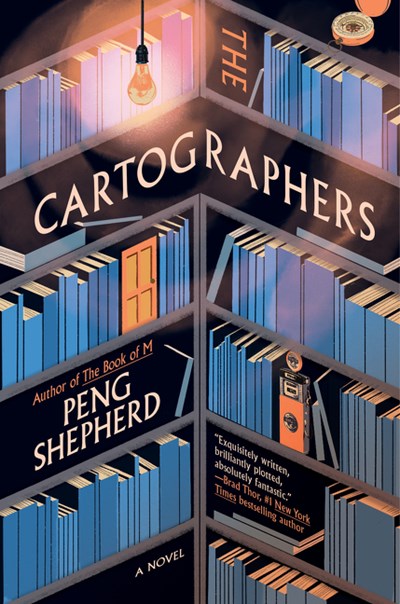A richly layered novel—part mystery, part suspense—but completely satisfying. Saffron and her boyfriend are renovating their dreamy Cotswold cottage to make room for a baby, as Saffy is pregnant. Her grandmother, Rose, once lived here, although no one in the family even knew of the cottage’s existence until a few years back. But when the contractors tear up the back garden to expand the kitchen, they discover not one but two corpses. Questions lead back to Rose, now in a nursing home with dementia, and soon enough Lorna, Saffy’s delightful mom, flies in from the south of Spain—tan, oversized earrings, skinny jeans, Spanish boy-toy—to help sort out what has blown up into a murder inquiry. This novel is overflowing with narrators and stories—we have documents from the past, Lorna’s memories, Rose’s memories, another storyline from a different family—and that’s just the start. But Douglas manages to keep all the balls in the air, the pace brisk, and the ending a total head-spinner. A classic slow burn, this novel will appeal to fans of Catherine Steadman and Lucy Foley.
Review
This standalone novel, a break from McTiernan’s Cormac Reilly series, is proof of the extraordinary depth and breadth she possesses as a writer. Hannah, a third year law student at the University of Maine, manages to bulldoze her way into spending a semester at the University of Virginia School of Law’s Innocence Project, a true-to-life initiative that seeks exoneration for wrongfully convicted people in Virginia. She leaves behind her mother—a fragile alcoholic—as she attempts to thwart one of the Project’s high profile cases: the release of Michael Dandridge, who’s serving life imprisonment for rape and murder. Why does Hannah care? The secret lies in her mother’s 1994 diary, passages of which are interspersed throughout the present-day narrative. Hannah’s efforts to sabotage the case—and the shocking facts she unearths in the process—are the stuff of a classic thriller. But the emotional connections forged throughout the book give it added meaning. For a writer who has seemingly never lived in the United States, the locations, diction, and class signifiers are flawless. This novel can appeal to a wide range of readers, from suspense seekers to fans of legal thrillers to those who just want, as the British say, a cracking great read.
This startling work upends every stereotype of old ladies and killers. Known as Hornclaw, our protagonist is only 65 but welcomes the invisibleness of appearing elderly so as to better function as a disease control specialist: a hired killer. Under her baggy, mismatched clothes, Hornclaw has such a fearsome body that a TV producer at the gym asks her to be on a show about unusual people. But she fears being forced into retirement soon, a euphemism for being killed by the other specialists at the disease control agency. As we observe the abusive childhood that led Hornclaw to obsessively love her dog, Deadweight, but blithely kill strangers, we’re led toward a hairpin turn in her personality, when she finally cares for someone but it is part of a deadly trap. The story, which immerses readers into everyday life in Seoul, is made unforgettable by Gu’s language as she draws readers into the chilling, beautiful wanderings of Hornclaw’s mind, which flits from contemplating someone eating a peach (“she watches a perfect small world being smashed inside his mouth”) to considering the home of a newly butchered man (“the hallway to the living room seemed to loll like a dead person’s tongue”). For lovers of literary fiction and book clubs that will try something different.
221b Baker St. is home to a new generation, with Sherlock Holmes’s daughter, Joanna, and her husband, Dr. John Watson Jr., son of Sherlock’s longtime sidekick, in residence and solving crimes. In this sixth in the series, Joanna, who’s just as meticulous and insightful as her father, is called by Scotland Yard to help with a series of thefts in hotels around London. Joanna wonders why she and the Yard are required until she learns that the victim of the most recent crime is the governor general of South Africa, and what was stolen from his locked room was the enormously valuable blue diamond, the search for which sets the Watsons questioning everyone from diamond merchants to underworld dealers. In addition, it’s 1917, and the detectives must pursue another stolen item, one that’s crucial to the British effort to win the Great War. This part of the plot sees the famous offspring draw on every ounce of their courage as well as their connections with Sherlock’s Baker St. Irregulars, a gang of ruffian children, to win the day. Along the way, readers will enjoy the many references to Sherlock Holmes’s cases, often the subject of reminiscences by his daughter and her father-in-law; also a pleasure is the relationship between Joanna and John, she a wily sleuth and he an adoring supporter of her eccentricities. For fans of the great detective, of course, but also those who enjoy tales of wartime espionage.
A quirky, droll, and completely captivating novel about Linda, whose sad-sack suburban life slowly falls apart, only to reveal something far better. Linda’s passions are few, namely housecleaning—she’s a bit obsessive compulsive—and her part-time job in a thrift shop. Her contacts are equally meager, mainly her mother, who’s skilled in finding new and creative ways to put down her daughter, and husband Terry, best ignored, which Linda does. When she and Terry move into a new home in their housing estate, Linda becomes fascinated with the advertising catalogs—think West Elm—that are still being delivered to the previous occupant, Rebecca. Linda decides the best way to achieve this lifestyle is by tracking down Rebecca and ingratiating herself, and in some of the funniest yet most cringe-worthy scenes in the book, she succeeds in doing just that. Meanwhile, a serial killer is loose in the estate while Terry’s work hours suddenly become extremely erratic. Cause for concern? Not for Linda, who’s more taken in by BFF Rebecca than anything nefarious that Terry might be up to. A wonderful novel that reminds us that life is rarely what it seems, and outcomes can seldom be predicted.
The recent college-admissions scandal comes to mind when meeting the rich, competitive seniors of Colorado’s Falcon Academy High School and their even more fiercely cutthroat moms. Former friendships are thrown to the side when Mia and Sloane, best friends since grade school, both try for a soccer scholarship to UCLA. Their moms, who’ve spent countless hours together at soccer-pitch sidelines over the years, are increasingly at war too. It’s all eye-rolling entertainment for the staff at the school, who must please the moneyed families no matter how ridiculous their obsessions. Probably the most jaded by these mind games is Natalie, a secretary to the principal who has a front seat to the show and whose personal life is slowly being followed down the drain by her professional one. With so many dysfunctional characters and moral rollercoasters, readers won’t know whom to point at or root for when a body is found in the gym. Ward (Beautiful Bad, 2019) does a great job of portraying the disarray caused by meanness and greed, and when characters show unexpected sides, she deftly makes that switch. Note that there’s sexual abuse “off camera” here. For Liane Moriarty’s legions of followers.
Taylor, Sarah Stewart. The Drowning Sea (Maggie D’arcy Mysteries #3). June 2022. 352p. Minotaur.
I tiptoe warily toward books set in my home country, Ireland, fearing they’ll be all priests and mist, but Taylor mines a thoroughly modern Ireland for her thoughtful tale. The setting is West Cork, long a bohemian area that attracts foreigners who like a slower way of life. Taylor shows it being overtaken by the ultra-rich while the local bad boy made good, who owns everything from the gastropub to the manor house, is building a hotel that has locals staging protests and sabotaging construction. The beauty of the area is already working against it, then, when a body washes up on the beach. He’s a member of the area’s Polish community, one of the young people who ease the lives of the rich but struggle themselves, and his death begins to scrape away the veneer of niceness on the town’s past and present. Women steer this story, starting with the series’ star, Maggie D’arcy, a Long Island police officer who’s visiting Ireland but may stay with her new boyfriend and their respective children. There is also a young Polish officer who reluctantly lets Maggie into some aspects of the investigation and an artist whose nebulous memories of a possible past crime seem related to the present-day violence. Tana French fans will love this intricate, relationship-fueled crime story and its strong women characters.
First published 50 years ago, Fadeout introduced David Brandstetter, a ground-breaking detective—he works as an insurance claims investigator—who is openly and unapologetically gay. This was at a time, as Michael Nava reminds us in his introduction, when “49 out of 50 states criminalized gay sex between consenting adults and the American Psychiatric Association deemed homosexuality a mental disorder.” One of the great contributors to California noir, Hansen went on to redefine the private eye through 11 more Brandstetter novels (all being republished in print and as ebooks by Syndicate Books), stretching from 1965 and the rising counterculture to the late ‘80s and AIDS. Throughout, Brandstetter regularly touched on hypocrisy and homophobia, while managing to attract the largest readership queer crime fiction had ever received. Fadeout focuses on the disappearance of Fox Olson, a country singer and radio star whose car was driven off a bridge during a storm and the body never found. Brandstetter doesn’t buy it. In prose so lean and evocative you want to stop and read it aloud, we follow Brandstetter as he goes deep into Olson’s life as well as his own, each achingly sad in its own way.
Ingenious grifter. Con-artist extraordinaire. Feminist Robin Hood. Add to this just plain old brilliant and you have the incredible character of Meg Williams. When her mother gets conned out of the family home by a sleazeball boyfriend—then dies shortly afterwards—18-year-old Meg vows this will never happen to her, and she flips the narrative and figures out how to steal from men. She begins small—seducing a high-school principal—but slowly works her way up the food chain as she deftly separates men, one more despicable than the last, from their money. When enough of their assets are in her accounts, she suddenly disappears, off to another city, another persona, another man. While Meg thinks she’s getting away with it all, one woman, journalist Kat Roberts, is watching her. Kate has her own reasons to expose Meg, and the two of them dance around each other as Meg lays the groundwork for her biggest con yet, worth millions of dollars and putting a political career at risk. With two super-strong characters, a remarkably credible and terrifying depiction of high-level scamming, and a pace that’s relentless, Julie Clark has given fans of the domestic thriller a real treat.
One of the most original books I’ve read in a long while, and one that brings up fascinating questions about the relationship between maps and the places they depict. From the beginning of their studies at the University of Wisconsin, the friends who call themselves the Cartographers live to make maps come alive. After grad school, they begin work on The Dreamer’s Atlas, which will feature “fantastical recreations of real places, and…realistic ones of imaginary places”—for example, the magic-tinged maps from Lord of the Rings will be made to look real and actual places will be given the fantasy treatment. The work is soon abandoned and the friends’ lives take a very wrong turn when they become obsessed with something outside the atlas. Move forward twenty-something years and Nell, daughter of two of the Cartographers, is struggling in a job she hates after being fired years before from the map division at New York Public Library by her father, a legendary archivist there. She and her father haven’t been in touch in all those years, but she’s forced back to the library when he’s found dead at his desk, starting a series of very odd happenings that Nell must get to the bottom of if she doesn’t want to be murdered next. The library crimes here, while shocking, take a welcome back seat to the Cartographers gripping adventure, as Shepherd (The Book of M) lays bare how reality and wishes, passion and pain can coexist and become explosive. For fans of Zakiya Dalila Harris’ The Other Black Girl, which also swerves into unexpected waters.

